In Pictures: Drilling into Antarctica's hidden lake
- Published

Vostok is a sub-glacial lake in Antarctica, hidden some 4,000m (13,000ft) beneath the ice sheet. It has been isolated from the rest of the world for millions of years.
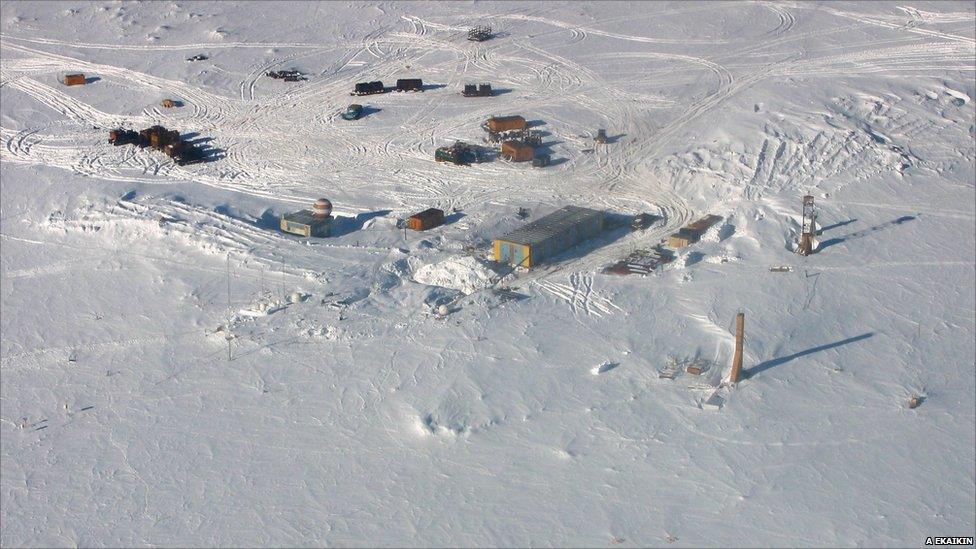
The remote Vostok Station was built in 1956. However, it was only in the 1970s when, with help of an airborne radar, British scientists first suspected that there was something underneath all this ice.

There have been many international expeditions working here throughout the years, but the Russians first started drilling before they knew there was a lake under the ice.
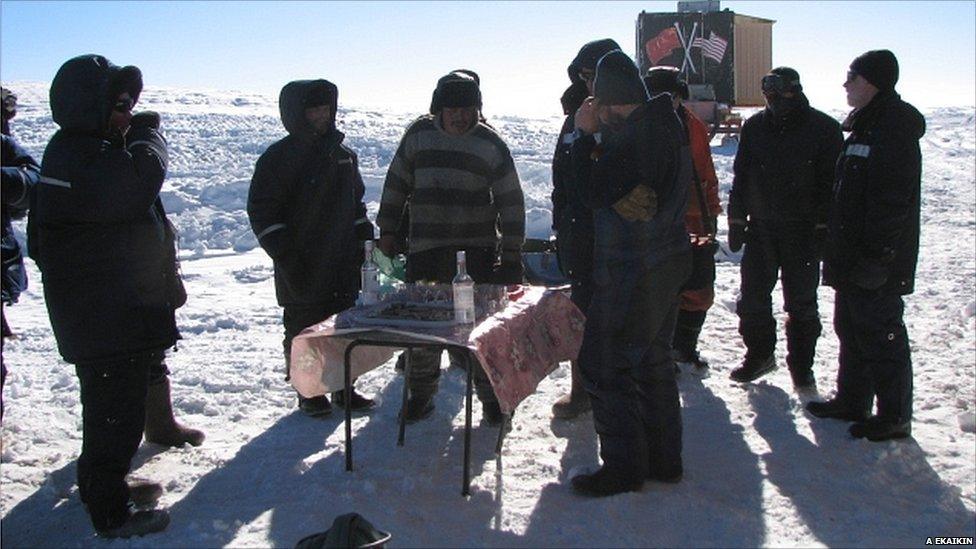
Freezing temperatures that measure an average -30C (-22F) during the summer season, which runs from December through to February, do not stop the researchers from partying outside.
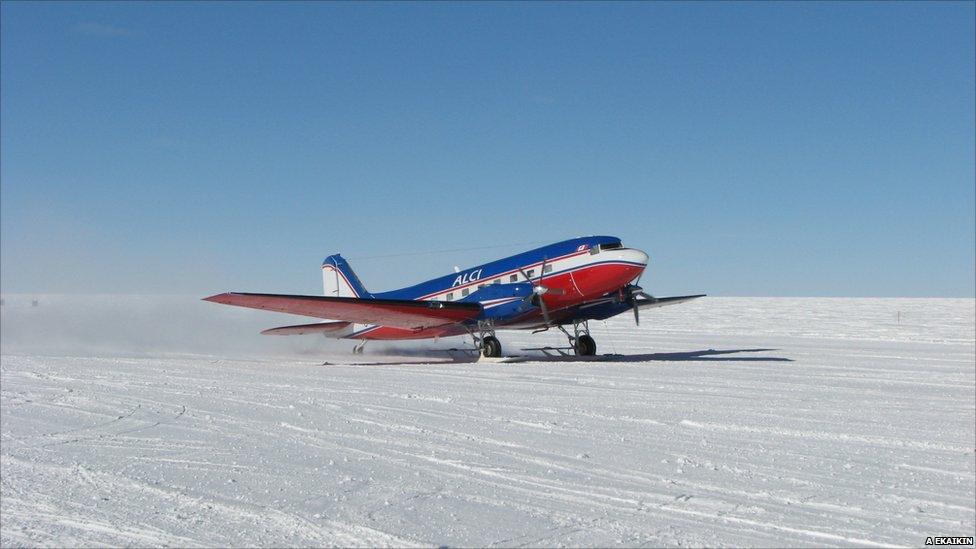
But soon it will be too cold for an aircraft to land or to take off - starting in February, temperatures here drop drastically. It takes four hours of flying above Antarctica to get to the station.
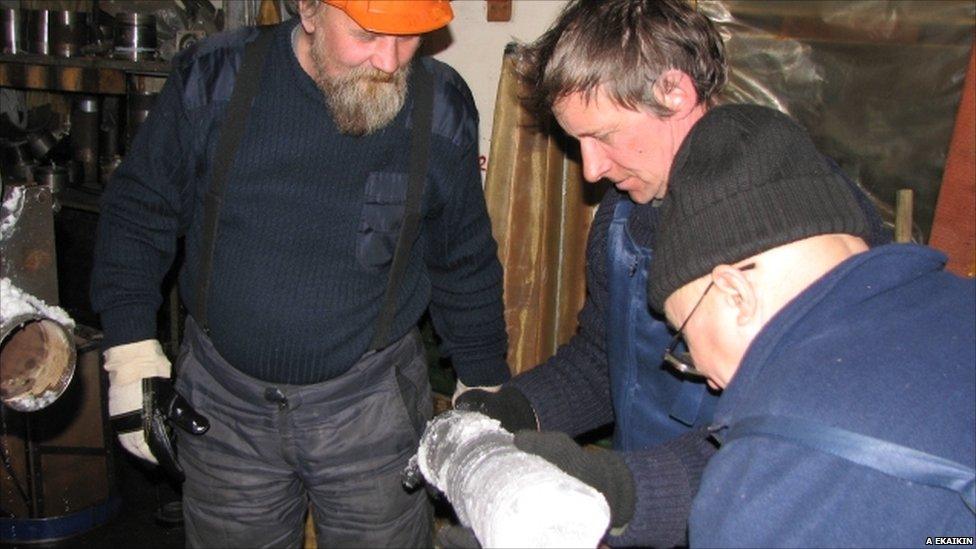
Up to depths of 3,000m drilling is relatively easy, but after that ice changes structure - it becomes monocrystalline and as hard as glass.

The ice cores taken during the drilling are analysed at the research station in Vostok.
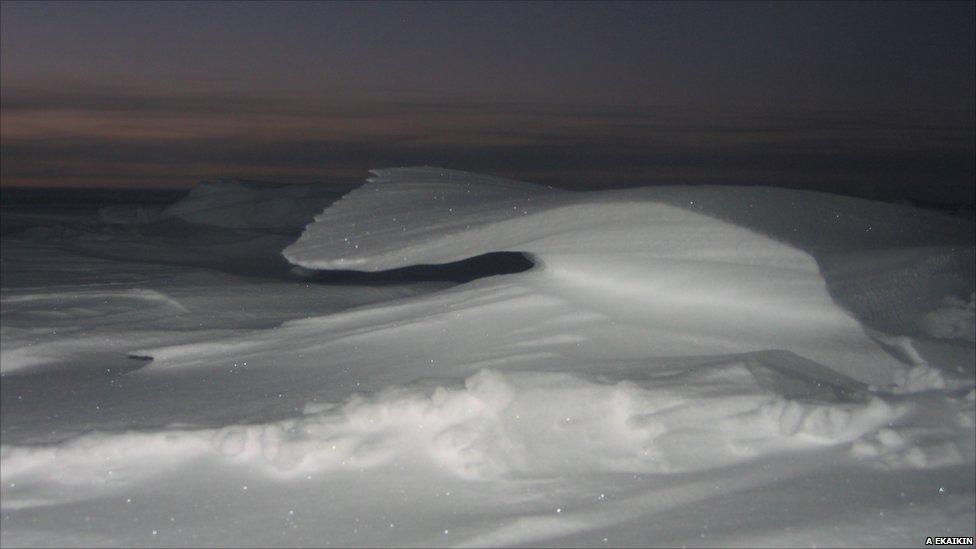
The harsh, frozen environment in Antarctica generates a breathtaking landscape.
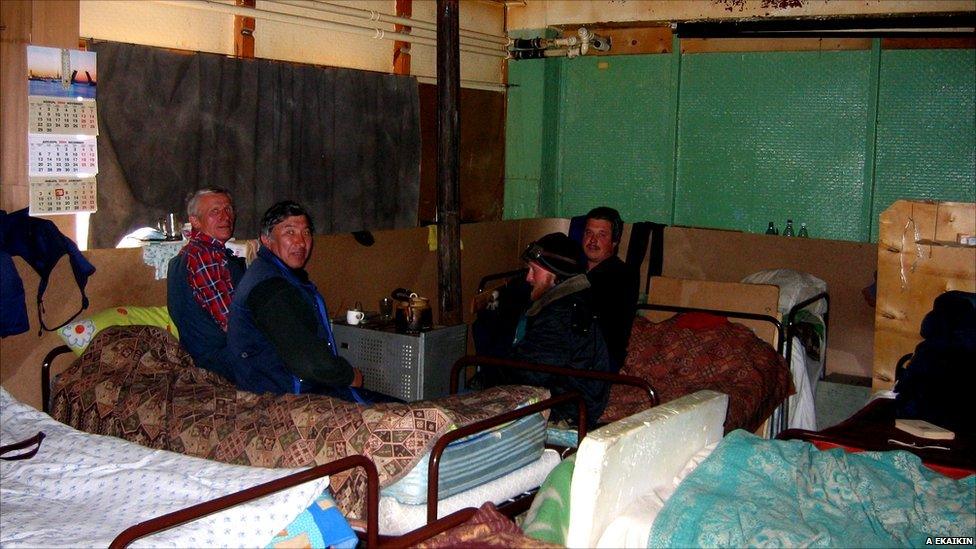
Living conditions are quite simple and there are usually about 30 people at the base, including two doctors, a cook, mechanics, and different scientists.
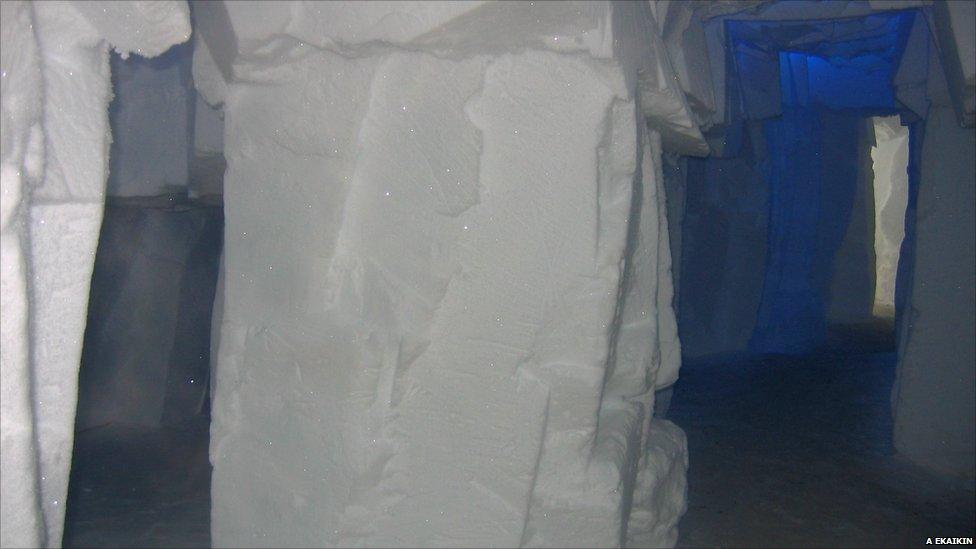
Wherever you look, there is no escape from the snow and ice.
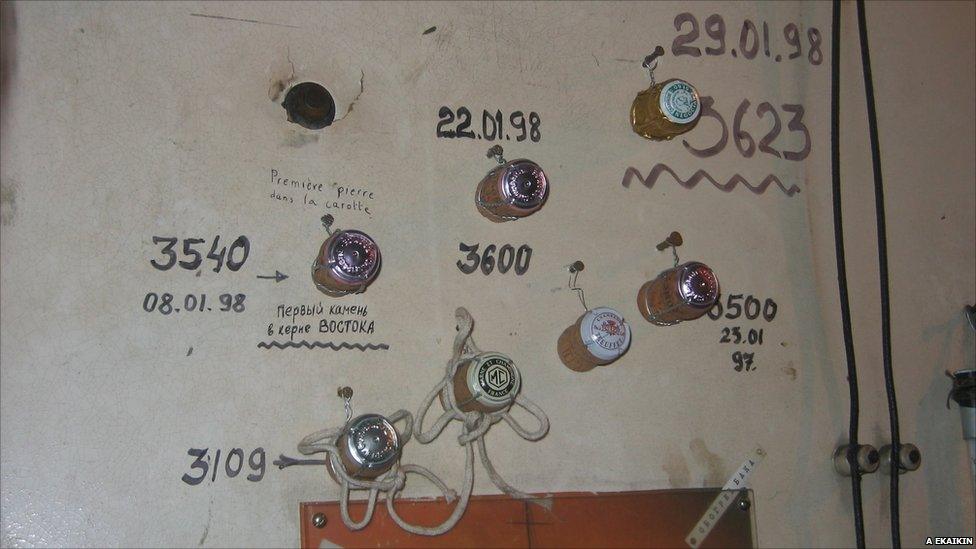
Every time the team reaches a milestone in drilling, they open a bottle of champagne to celebrate before sticking the cork on the wall and write the depth they had reached. In January, they passed the 3,700m mark but the cork has yet to appear on the wall.
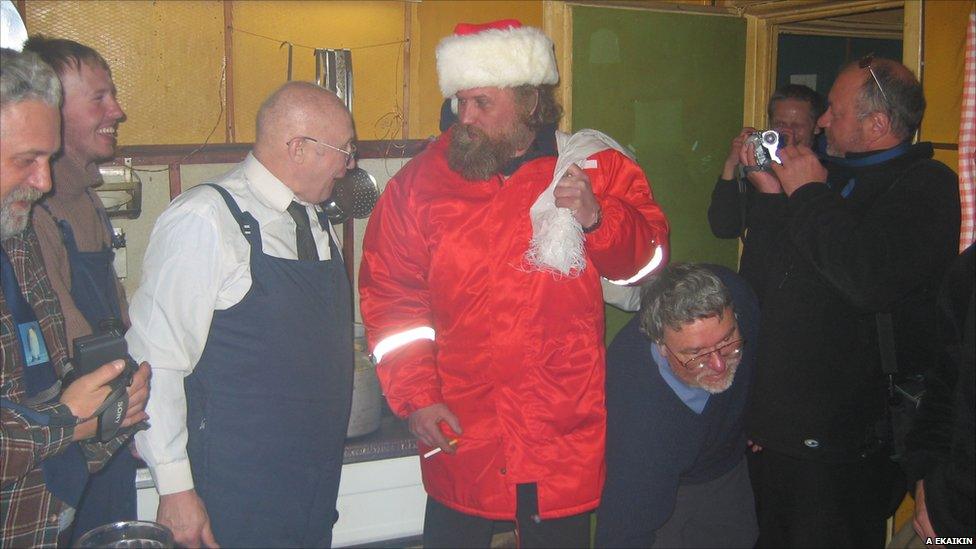
There are no weekends, and the people relax only twice during the drilling season - on the New Year's Eve and 16 December, which is the research station's birthday.
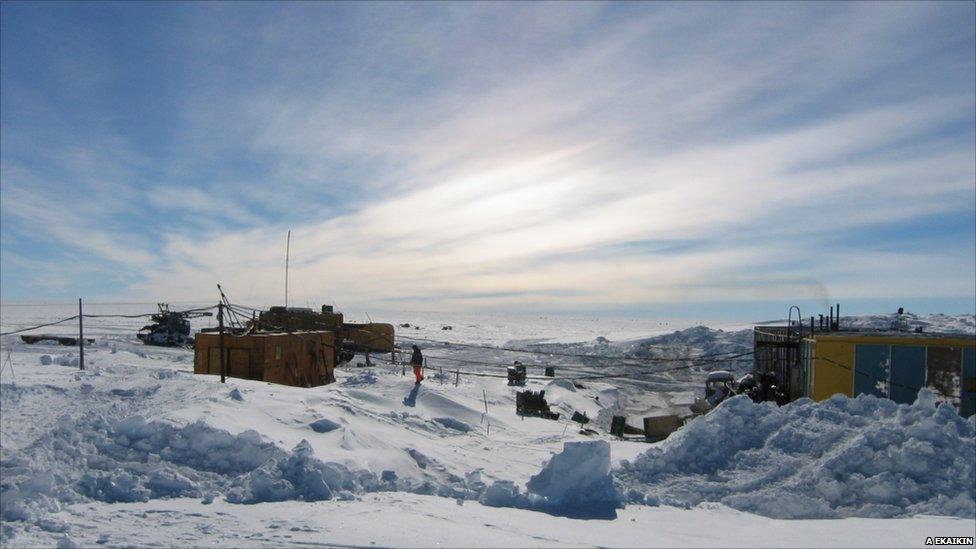
Besides the scientists at the station, there are no other people living nearby - only on other stations elsewhere in Antarctica.
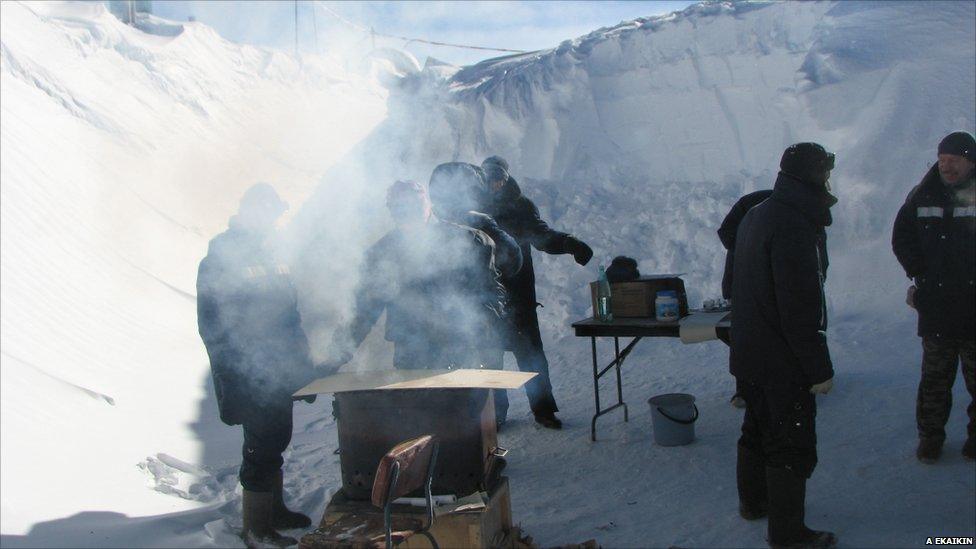
Vostok was the location where the coldest temperature on Earth was recorded in July 1983 (-89C/-128F).

Some machinery at the station still carry "USSR" emblems, even though the flag has been changed from Soviet to Russian.